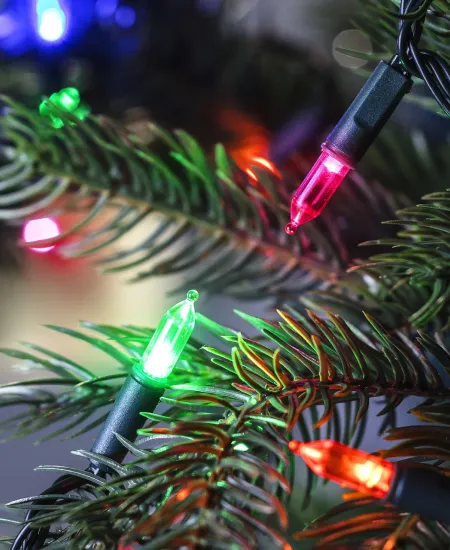Introduction: The Glowing Dilemma of Outdoor Christmas Lights
Every year, as the cool breeze starts to roll in and the festive songs sneak their way onto our playlists, there’s a national scramble to unearth those boxes of holiday decorations. Ah, the Christmas lights—nothing says ‘holiday spirit’ quite like a home twinkling with colorful bulbs. But before you start decking the halls (or in this case, the porch and bushes), have you paused to consider the safety of your electric decorations? From personal blunders to professional advice, here’s what I’ve learned about keeping the holidays both merry and safe.
The First Check: Are Your Outdoor Lights ready for the Season?
Let me tell you, nothing dampens the holiday spirit quite like a string of lights fizzling out, or worse, causing electrical issues. Before you start unraveling that knot of lights (and patience), here are a few things I’ve learned to check off the list:
- Start with the label: Only use lights that are designated for outdoor use. They’re made to withstand weather variations, unlike their indoor counterparts. If you're upgrading, check this guide on outdoor lights.
- Inspect each set: Look for frayed cords, cracked bulbs, and worn-out plug-ins. These are fire hazards waiting to happen.
- Test them before decorating: It’s easier to replace a bulb on your front porch than when it’s strung up on the roof’s edge. Here’s a reminder on how to test your lights properly.
These might seem like no-brainers now, but I’ve had my fair share of ‘oops’ moments. Imagine discovering a whole section of lights out when they are already twinkling from the roof. Not fun at all, especially when you’re in a mild panic, balancing on a ladder, as chilly winds threaten your festive morale.
External Factors: Weather, Wiring, and Wildlife
Mother Nature can be a bit of a Scrooge when it comes to outdoor decorations. Here’s how to ensure the weather doesn’t wreak havoc on your luminous display:
- Waterproof connections: Even lights rated for outdoor use can falter at the connections. Consider using covers or wrapping them with insulating tape to prevent moisture from creeping in. Or learn how to make your light display weatherproof.
- Securing loose ends: Wind can play mischief with poorly secured lights. Use insulated holders or zip ties to keep lights in place without damaging the cords.
- Animal proofing: Squirrels and other critters love to nibble on rubbery cords. Wrap cords in protective materials like split tubing to discourage them.
I once spent a weekend perfecting my yard’s glowing layout, only to have a family of raccoons see the cords as a chew toy. And let me tell you, replacing mangled lights while explaining to your five-year-old why Santa might skip our house for ‘safety reasons’ was not a highlight of my holiday experiences.
Light Safety Standards and Certifications to Look For
Deciphering the certifications on your Christmas lights’ packaging might feel like cracking an ancient code. Here’s a simplified guide:
- UL Listing: Ensure your lights are tested for safety by looking for a UL (Underwriters Laboratories) tag. It means they meet North American safety standards.
- Energy Star rating: Not only for appliances, this certification means your lights are more energy-efficient (which also means lower electricity bills).
- Fuses in the plugs: Good quality outdoor lights will have fuses built into the plugs to prevent overheating.
Once I bought these stunning no-brand lights from a pop-up holiday shop. They looked great, but let’s just say they performed like a B-movie—good to look at but lacking substance. After a mini light meltdown, I now stick to lights with clear safety markings, much to my electric bill’s relief. (code-authorities.ul.com)
Installation Tips That Keep the Twinkle Safe
Installing your lights might feel like you’re rewriting ‘Home Alone’—minus the booby traps, hopefully. Here are some practical installation tips:
- Use the right tools: Avoid using nails or screws that can pierce the cord. Opt for plastic clips that gently hold the lights along surfaces.
- Manage your power source: Don’t overload your circuits. Use a power strip with a built-in circuit breaker if possible.
- Plan your layout: Consider where you’ll need extension cords and ensure they’re rated for outdoor use. Avoid daisy-chaining multiple strings of lights together.
One year, in my eager festivity, I might have gone a bit overboard and plugged too many lights into one outlet. The resulting blackout was a gentle reminder from the universe to respect the power grid. Subsequently, I’ve invested in a proper outdoor-rated timer, which simplifies things and helps spread the electrical load more evenly. (thisoldhouse.com)
Conclusion: Lighting Up Safely
Setting up outdoor Christmas lights can turn your home into a winter wonderland, but it’s vital to prioritize safety amidst the excitement. By choosing the right products, verifying their safety, and installing them correctly, you can enjoy a sparkling holiday season without extra ‘adventure’. Every twinkling light can be a reminder of the warmth and joy of the season, as long as it’s done right.
Remember these tips when decorating, and share your experiences to help others light up their homes safely. Here’s to a bright, joyful, and safe holiday season!
Subscribe to our email newsletter and unlock access to members-only content and exclusive updates.

Comments